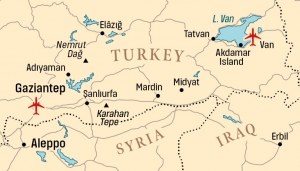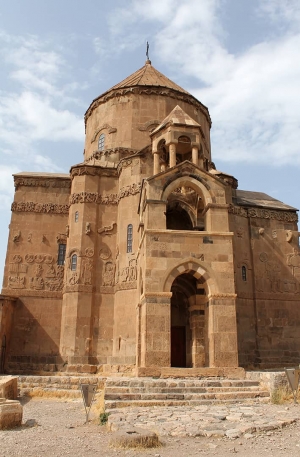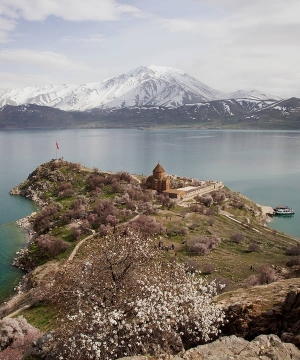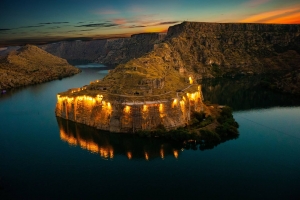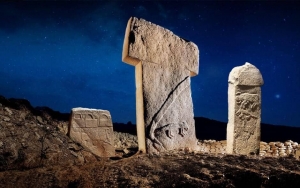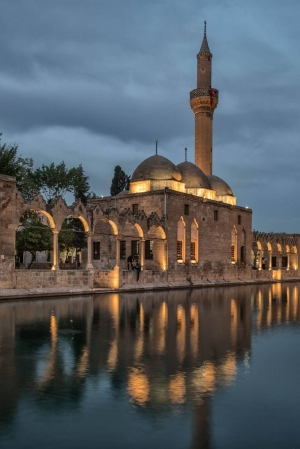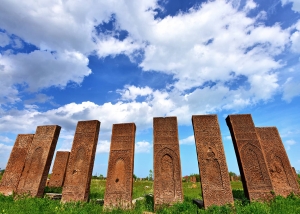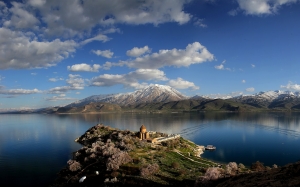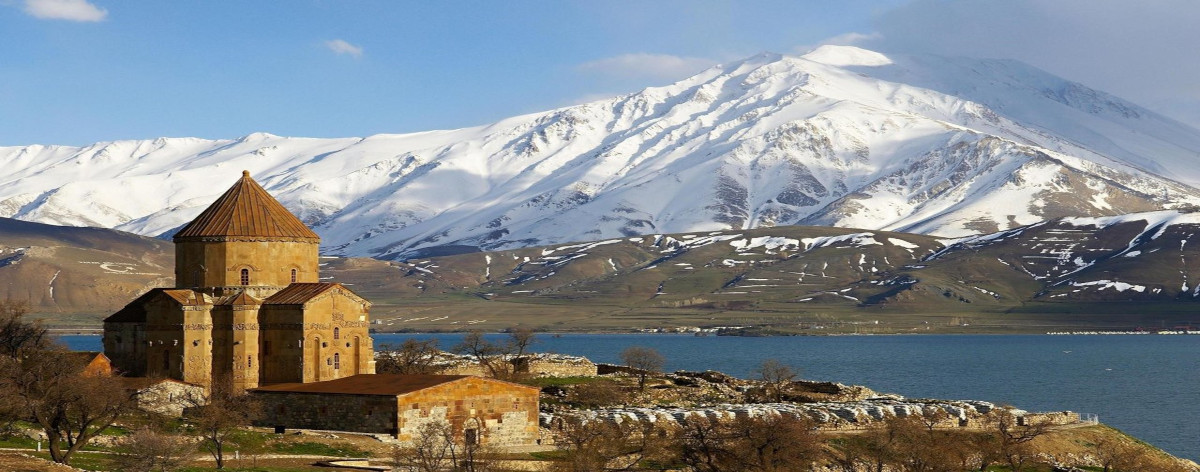
Eastern Turkey
Cradle of Civilisation
Classical History and Archaeological ToursGeneral History Tours
Spring 2027
(11 Days)
Eastern Turkey
Cradle of Civilisation
Classical History and Archaeological ToursGeneral History Tours
Your Holiday Essentials
Spring 2027
(11 Days)
3/4-star hotels, meals as indicated,
drinks with dinner, all entrance fees,
tour manager and expert historian
throughout, optional travel from UK.
Incl. travel from UK: N/A
Use the button below to register your interest in this tour
Interested in this tour but not ready to book? Register your interest using the link below and we will keep you updated on the progress of the tour
|
|
Tour Introduction
The history and culture of eastern Turkey is simply staggering. For millennia a complex crossing point of armies, traders, religions and travellers the region has hosted a rollcall of ancient peoples and cultures, some only now being rediscovered by the discerning traveller: Urartians, Assyrians, Babylonians, Mitannians, Commagenians, Armenians and Ottomans to name a few. Their legacy is an extraordinarily rich trove of sites: from the world’s oldest megaliths at Göbeklitepe, and the brooding stone figures of Mount Nemrut, through to the outstanding mosaics at the Zeugma Museum and beautiful medieval churches of Lake Van, the region is a compelling destination.
Background
Eastern Turkey is a rugged area comprising a mountainous north and a high arid plateau of 600m in elevation towards the south. There is evidence of habitation here from earliest times and by the Neolithic period several settlements had developed, most famously Göbekli Tepe. This is considered one of the first examples of man-made monumental architecture and is over 5,000 years older than Stonehenge. In time trade networks developed between the region and Mesopotamia to the south and by 1300 BC the Hittites, with their base in central Anatolia, had extended their hegemony over the Upper Euphrates. By the 14th century BC the rising power of Assyria, based largely in what is now northern Iraq, started to expand northwards and by the 7th century BC held sway over vast areas of eastern Turkey. Beyond Lake Van they came up against the Kingdom of Urartu. By the 4th century BC the Seleucid Empire began an expansionist policy which in time dominated the whole area before being eroded by the eastward growth of the mighty Roman Empire. The region became a buffer zone between Rome, Parthia and the Kingdom of Armenia. With the growth of Islam the region was dominated by the Umayyad Caliphate and became of zone of conflict between Arab and Byzantine armies. By the 16th century AD the region was conquered by the Ottoman Turks and since 1923 has been sovereign territory of the Turkish Republic. This is indeed an area with a rich and captivating history.
Highlights
- Travel in the company of our expert historian and Turkey specialist
- Visit the amazing Neolithic sites of Göbeklitepe and Karahan Tepe, at the cutting edge of our understanding of the ancient near east
- Marvel at the remarkable Hellenistic statues atop Nemrut Dağ
- Enjoy some of the best museums in Turkey – the Zuegma Mosaics Musuem at Gaziantep and the Şanlıurfa and Van museums
- Visit the unique cities of Mardin and Midyat, cultural and spiritual homeland to the Syriac Orthodox Assyrian people
- Hear an ancient form of Aramaic spoken, familiar to Christ
- Enjoy the peaceful shores of Lake Van and the beautiful Akdamar island
- Visit the incredible cities of Gaziantep, Şanlıurfa, and Van
What's Included
- 3 & 4 Star Hotels
- Return flights from London (optional)
- Internal flight(s)
- Expert historians throughout providing a daily variety of talks, presentations and Q&A
- Dedicated Tour Manager
- Dinner parties hosted by your expert historians and tour manager
- The company of like-minded travelers
- Helpful and friendly travel advice
- Meals as indicated in the itinerary
- Two drinks i,e wine or beer at each dinner and a welcome drink on first evening
- Entrance fees for sites included in itinerary
- Tour information booklet
- Modern, comfortable, air-conditioned coach
Itinerary
Day 1: Arrival - fly London to Gaziantep via Istanbul to arrive late evening. Hotel in Gaziantep – 2 nights.
Day 2: The Euphrates and Gaziantep: Our tour starts with a drive across the historic Anatolian landscape to Halfeti where we enjoy a boat trip on the Euphrates, the source of life-supporting irrigation to the entire region for millennia. The building of the Birecik Dam in the late 1990s flooded large areas of farmland and even entire villages. On our boat trip we witness Old Halfeti and its forlorn submerged minaret. We return to Gaziantep to visit the superb Zeugma Mosaic Museum, the largest museum of its kind in the world. Here we marvel at the unparalleled collection of Hellenistic and Roman mosaics which are the pride of south-east Turkey. In the 2000s the ancient city of Zeugma was threatened with inundation from the new dam and this prompted a large-scale recovery of these exquisite mosaics. (B, L, D).
Day 3: Gaziantep - this morning explore Gaziantep including the vibrant bazaar area before starting our afternoon drive to Adıyaman. Hotel in Adıyaman – 1 night. (B, L, D).
Day 4: Nemrut Dağ and the Commagenians: a breathtaking drive into the hills where we stop off at the Karakuş Tumulus funerary monument (built by Mithridates II of Commagene in 30–20 BC), the beautifully preserved late Roman bridge of Cendere Köprüsü and Arsameia, the royal seat of the Commagene kingdom. We then continue to the extraordinary Nemrut Dağ, a mountaintop sanctuary built by the Hellenistic King Antiochos I of Commagene (69-34 BC) as a monument to himself. A 600 metre walk from the road-head takes us to the summit where we marvel at a number of lofty statues, brooding human faces among them, declared a UNESCO World Heritage Site in 1987. Continue to Şanlıurfa. Hotel in Şanlıurfa – 2 nights. (B, L, D).
Day 5: Göbeklitepe and Şanlıurfa - today we drive the short distance to visit the incredible Neolithic site at Göbeklitepe, designated a UNESCO World Heritage Site in 2018. Considered the oldest and largest ritual site in the world, Göbeklitepe has radically challenged our preconceptions that only settled societies can produce monumental architecture. Here we admire a series of carved monolithic structures up to 5 meters in height. We return to Şanlıurfa for lunch then spend the afternoon at the superb museum which includes a wealth of objects from Göbeklitepe as well as Assyrian, Babylonian and Hittite collections. The early evening is spent at the atmospheric Abraham’s Cave and the Pools of Holy Carp. This is said to be Abraham’s birthplace and where he was cast into a fire by king Nimrod. The flames turned to water and the burning wood transformed into carp, thus the Holy Carp we see today. (B, L, D).
Day 6: Karahan Tepe to Mardin - this morning we move east to visit the Neolithic site of Karahan Tepe, sister site to Göbeklitepe, and with its origins as far back as 10,000 BC, thought to be the oldest known human village. We continue through beautiful scenery to Mardin with its lofty citadel and stone buildings cascading down a mountain to the plains below. We spend the afternoon exploring architecture dating to Artuqid times (12th to 15th centuries AD) and the town’s Syriac churches. Hotel in Mardin – 2 nights. (B, L, D).
Day 7: The Tur Abdin - a fascinating day exploring the remarkable Tur Abdin region, cultural and spiritual homeland to the Syriac Orthodox Assyrians, a people with their origins in the Assyrian Empire of the 10th century BC. Our first stop is the town of Midyat with its old Assyrian quarter where you can still hear the soft cadences of Turoyo, a Neo-Aramaic language which would have been familiar to Jesus Christ. We then drive across the historic north Mesopotamia plain to the lovely Mor Gabriel, founded in 397 AD and the oldest surviving Syrian Orthodox monastery in the world. Our journey continues to Ḥāḥ (Anıtlı) where we marvel at more captivating Syrian Orthodox at the monastery church of Yoldath Aloho, the most beautiful in Tur Abdin. Return to Mardin. (B, L, D).
Day 8: Lake Van - today we make the long but rewarding journey to the town of Tatvan on Lake Van through the increasingly mountainous scenery of the Upper Tigris. After checking in to our hotel we continue along the shores of the lake to visit the stunning Ahlat Seljuk tombs. Dating from the 12th – 15th centuries AD these exquisite tombstones are richly decorated with geometric patterns and elaborate muqarnas decorations reflecting a particularly advanced level of artistry. Hotel in Tatvan – 1 night. (B, L, D).
Day 9: Akdamar and Van - starting the day with the beautiful view of the lake framed by spectacular mountains beyond we enjoy a drive along the shore to take the short boat crossing to the island of Akdamar. This incredible location is the home to the 10th century AD Armenian Holy Cross Cathedral, the seat of the Armenian Apostolic see of Aghtamar from 1116 to 1895. There is something incredibly rewarding in admiring the frescoes and intricately carved reliefs in this peaceful place. We return to shore and continue to Van where after checking in to our hotel we visit the excellent museum with its extensive collection of Urartian artefacts and inscriptions. Hotel in Van – 2 nights. (B, L, D).
Day 10: The Kingdom of Urartu - this morning we enjoy the treasures of this interesting city including the imposing castle known as the Rock of Van, a massive stone fortification built by the Kingdom of Urartu from the 9th to 7th centuries BC. Our Urartian theme continues this afternoon when we drive through rugged landscape to the fort at Çavuştepe Kalesi. Alongside the fortification walls can be seen a sophisticated palace dating from the height of Urartian power in the reign of Sarduri II (764–735 BC). (B, L, D).
Day 11: Depart - there is free time to explore the city before driving to Van airport for our afternoon flight to London via Istanbul. (B).
Recommended Reading List
Your Holiday Essentials
Spring 2027
(11 Days)
3/4-star hotels, meals as indicated,
drinks with dinner, all entrance fees,
tour manager and expert historian
throughout, optional travel from UK.
Incl. travel from UK: N/A
Use the button below to register your interest in this tour
Interested in this tour but not ready to book? Register your interest using the link below and we will keep you updated on the progress of the tour
|
|

